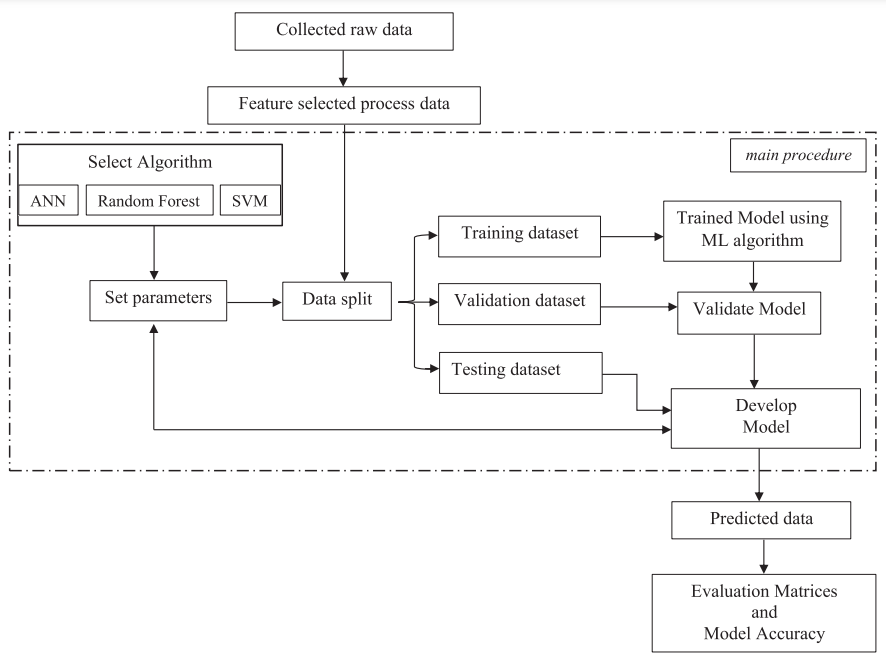Soft soils, particularly marine clays, are widely recognized for their long-term settlement behaviour. The increasing development of urban areas and large-scale infrastructure projects necessitates the construction on soft and highly compressible soils. A critical parameter in geotechnical engineering for such undertakings is the coefficient of consolidation (Cv), which measures the rate at which soil settles under load. This coefficient quantifies the speed of soil consolidation when subjected to a change in stress, reflecting the rapid settlement of soil resulting from pore water dissipation.
A higher Cv value indicates more rapid consolidation, while a lower value suggests a slower settlement process. This parameter is essential for foundation design, embankment construction, and the prediction of long-term ground settlement behaviour. Inaccuracies in its assessment can lead to excessive settlement, structural instability, and even the failure of construction projects.
Conventional laboratory methods like oedometer tests to determine Cv are frequently time-intensive and necessitate expert skills. Given these difficulties, machine learning (ML) offers a compelling alternative for effectively predicting Cv using different soil characteristics. Approaches including Support Vector Machines (SVM), Principal Component Analysis (PCA), Artificial Neural Networks (ANN), the Least Absolute Shrinkage and Selection Operator (LASSO) algorithm, along with fuzzy inference systems, provide creative strategies to improve the efficiency and precision of these predictions.
Numerous empirical equations have been proposed in the field of geotechnical engineering to estimate the coefficient of consolidation (Cv) based on various soil properties. However, these equations often oversimplify the intricate interactions among soil parameters. In comparative studies, these empirical equations have demonstrated lower accuracy when evaluated against machine learning (ML) models. Additionally, numerical simulations conducted using the finite element method (FEM) in Abaqus have revealed significant discrepancies between the simulated Cv values and the actual measurements, further underscoring the superior performance of ML models in this context.
A relevant study conducted by Lalit Bora et al. at the Indian Institute of Technology in Indore, India, focused on the prediction of Cv. This study utilized a dataset comprising 200 soil samples, which contained 11 independent features. Through the application of univariate feature selection (UFS), the dataset was refined to identify the five most significant features by excluding those of lesser importance. UFS is effective in determining the strongest features correlated with the target variable through univariate statistical tests.
The features chosen for analysis were specific gravity, porosity, saturation degree, liquid limit, and plastic limit. A comparison was conducted using three machine learning models: artificial neural networks (ANN), random forest (RF), and support vector machines (SVM). The dataset was split, allocating 70% for training and 30% for testing, to assess the models’ effectiveness.
The analysis of the Artificial Neural Network (ANN) algorithm was conducted using the MATLAB environment, employing the sigmoid function as the transfer function and the Levenberg–Marquardt algorithm for training. Key performance factors considered include the number of hidden layers, neurons, and the training algorithm. The study reveals that an excessive number of neurons may introduce noise into the model, while an insufficient number may overlook critical dependencies. The data distribution during training and testing was found to be consistent. The analysis identified an optimal configuration with 20 neurons, leading to stable performance metrics. The model architecture consists of two hidden layers and one output layer, with the training process comprising 100 iterations and epochs.
In the case of the Random Forest (RF) analysis, RStudio was utilized to evaluate various tree counts, ranging from 5 to 50, to determine the optimal number of trees. The model selected, model_5618, exhibited the highest Nash-Sutcliffe Efficiency (NSE), with a perfect NSE value of 1 indicating no error variance. The resulting NSE values for training and testing were 0.84 and 0.64, respectively.
For the Support Vector Machine (SVM) algorithm, analysis was also conducted in RStudio, utilizing the radial basis function for SVM training. The model chosen, model_4067, showed the highest NSE values of 0.3 for training and 0.23 for testing. However, the SVM model displayed notable deviations from the actual target data, largely due to the extensive variations within the dataset influenced by soil properties.
Model performance was compared using the R-squared metric, revealing that RF outperformed others with an R-squared value of 0.92. The maximum squared errors for the different models were noted, where ANN recorded 0.0185, RF 0.026, and SVM 0.058. Despite all algorithms showing strong results with larger datasets, RF consistently demonstrated superior accuracy even with limited data, thanks to its built-in feature selection. RF’s flexibility makes it advantageous for both regression and classification tasks compared to its counterparts. By utilizing data-driven methods, geotechnical engineers can enhance accuracy, lower costs, and boost the efficiency of foundation design. As machine learning technology advances, it will play a crucial role in addressing complex geotechnical issues.
Reference
Singh, M. J., Kaushik, A., Patnaik, G., Xu, D. S., Feng, W. Q., Rajput, A., … & Borana, L. (2024). Machine learning-based approach for predicting the consolidation characteristics of soft soil. Marine Georesources & Geotechnology, 42(4), 405-419.https://doi.org/10.1080/1064119X.2023.2193174
Chen, W.-B., W.-Q. Feng, J.-H. Yin, J.-M. Chen, L. Borana, and R.-P. Chen. 2020. New Model for Predicting Permanent Strain of Granular Materials in Embankment Subjected to Low Cyclic Loadings. Journal of Geotechnical and Geoenvironmental Engineering 146 (9).10.1061/(ASCE)GT.1943-5606.0002334
Chen, W.-B., W.-Q. Feng, J.-H. Yin, J.-M. Chen, L. Borana, and R.-P. Chen. 2020. New Model for Predicting Permanent Strain of Granular Materials in Embankment Subjected to Low Cyclic Loadings. Journal of Geotechnical and Geoenvironmental Engineering 146 (9): 4020084. doi:10.1061/(ASCE)GT.1943-5606.0002334.
Pham, B. T., S. K. Singho, and H.-B. Ly. 2020. Using Artificial Neural Network (ANN) for Prediction of Soil. Vietnam Journal of Earth Sciences 42 (4): 311–319. doi:10.15625/0866-7187/42/4/15008.


